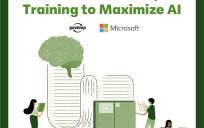Smarter cities are now building citizen-centered social programs backed by big data analytics. They’re using this technology to improve social welfare and alleviate socioeconomic distress. In a recent IBM report, Dr. Jonathan Fielding, now retired Director and Health Officer of the Los Angeles County Department of Public Health said, “An innovative strategy that introduces improved population health outcomes and closing the health gap are goals to be shared across all parts of government.”
There are a myriad of correlations between public health and quality of life factors. For example, the closer kids live to a park, the less likely they are to be overweight. According to the World Health Organization, poverty and chronic diseases are closely linked in a vicious cycle, where serious health conditions exacerbate poverty and vice versa.
According to Fielding, health behaviors such as eating habits, tobacco use, alcohol consumption an exercise determine 30 percent of our health. Social factors, however, such as education and employment, determine 40 percent and educational factors (including where we live) determine another 10 percent.
Ideal solutions are enhanced communication and collaboration, backed by increased intelligence through data. “Better utilization of data will allow us to better use limited resources,” explained Dr. Steven Golighty, Director of the Los Angeles County Child Support Services Department.
It’s time for government to leverage more data, build smarter approaches, and integrate solutions to achieve better results for social programs. Several municipalities across the country have started applying these concepts including Alameda County in California.
Alameda County Services: Interconnected and Intelligent
Like many across the country, Alameda’s Social Services Agency was reeling from budget cuts and staff shortages. Prior to 2010, citizens in need had to wait in long lines only to be told to come back later with more information. Benefits expired because recipients didn’t reapply in time, and caseworkers were not able to keep track of those who needed assistance.
Personnel also suffered. At the Administration and Information Services for the Alameda County Social Services Agency, it was not uncommon for caseworkers to have over 500 customers at a time. Many felt overworked and, unable to keep up with the demand, suffered from burnout. Assistant Director Don Edwards took note of these issues and applied his private sector experience to transform the way the county serves its customers.
Doing More with Less
To Edwards, the key to improving clients’ experience in the “system” is using practices from the banking industry, where he spent a decade earlier in his career.
“The solution we see is bringing business practices to social services,” he said. “You walk into a bank and, no more than five minutes later, you’re served (no matter how long that line is). While banks are also tight with their resources, they’ve figured out efficiency, and that’s where we need to head.”
The solution was the Social Services Integrated Reporting System (SSIRS), which provides a single, holistic view of customers’ relationships with Alameda’s social services agencies over the course of their lives. The parameters of Alameda’s smarter social services are:
- Instrumented- SSIRS extracts client information from a series of department specific systems.
- Interconnected– SSIR’s dashboard capability enables agency staff and management to view case performance form the global level down to the worker.
- Intelligent– Business intelligence and automated alerts give caseworkers the means to proactively manage their client base and the whole agency ability to coordinate the delivery of social services.
Edwards relayed a specific example of how SSIRS works, “If a single mom is alerted that her food stamp annual review is past due or coming up, she can address it before she’s cut off, so she doesn’t have to drag her two cranky children downtown on the bus, only to stand in line for hours,” he said. “If we can prevent that kind of situation on a large scale, we create a virtuous cycle by enabling a better experience for both the customer and the caseworker.”
SSIRS also works to combat social services fraud, where people try to receive services to which they’re not entitled. Perpetrators thrive on gaps between agency systems that permit them to cheat the process without detection. They can collect benefits from two addresses or from stolen IDs. SSIRS acquired the means to pinpoint fraud by pulling together client information. The agency gets a seamless view of its customers instead of through patchworks, where fraud perpetrators can easily penetrate the system.
“What SSIRS does is lower the bar and put a stop to far more fraud than we could before,” Edwards said. “In the first year the system came into use, Alameda was able to reduce fraud by $11 million, which means there are more benefits available for those who deserve them.”
Aside from saving in fraud reduction, the benefits of Alameda’s smarter social services include:
- Giving managers and caseworkers deep, real-time understanding of cases and program status, enabling them to find the best assistance programs for each situation.
- Revealing relationships between benefit recipients and programs, helping to eliminate waste, fraud, and redundancy.
- Generating reports in minutes instead of weeks or months, allowing caseworkers to better apply their expertise.
With smarter social services, an agency can better track a child moving through foster care until he’s an adult, or monitor how a family grows and changes over time through deaths, births, and marital status. Government agencies can leverage smarter care to better coordinate service delivery, provide better service to citizens, and even save lives.

Photo Credit: Flickr/Steven Depolo





Leave a Reply
You must be logged in to post a comment.